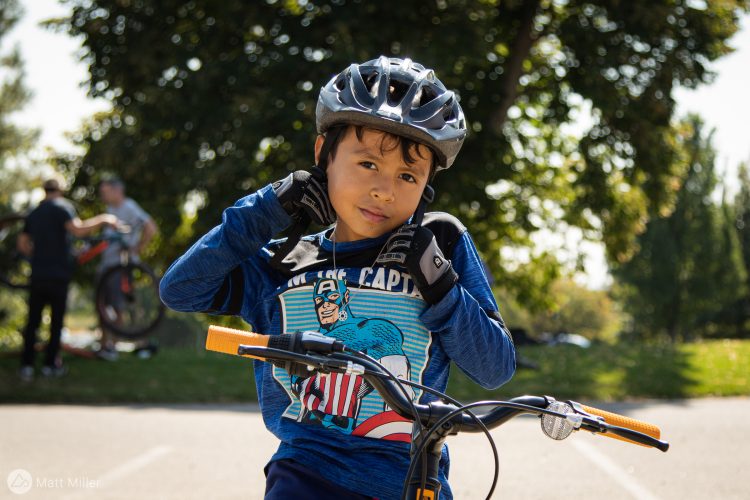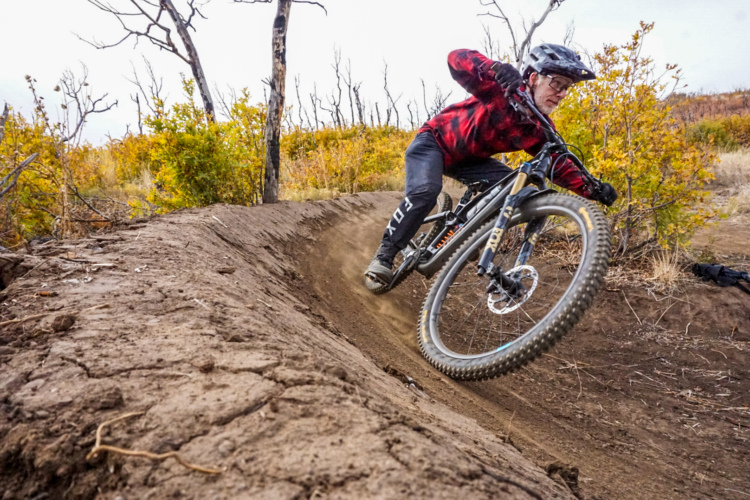
The cool thing about mountain bikes? There are many things, but to squeeze it into a word: Versatility. Primarily, we think of them as fun machines, but they are more than that. They can take us over mountain passes. They can ride rough trails and pedal up smooth roads; something road bikes can’t do. Mountain bikes can be gravel bikes and mountain bikes can be pedaled all year long.
Mountain bikes can also help us get to and from work. For Northwest Arkansas resident Mark Sniff, mountain bikes help him help people at work.
Sniff works for Ouachita Children, Youth and Family Services in Hot Springs, Arkansas as an outreach case manager. The organization serves homeless youth from ages 14 to 24, finding youth on the streets or in schools who may be experiencing homelessness, and providing resources whether it’s shelter services, hygiene kits, or a meal.
Sniff grew up mountain biking, or what most of us in our youth called mountain biking.
“I grew up on a dirt road and me and my brothers used to ride our little single speed kids bikes all over the place,” he said.
He moved to Arkansas in 2000 and mountain biked a bit but the trails hadn’t really been developed yet. So he rode on-road, off-road, and wherever his bike took him. Now that trails are all over the place, he’s riding more of the abundant singletrack.
As an outreach case manager, he found himself taking the train, or parking a ways away from where homeless encampments popped up, but the more he thought about it, he realized his bike, a fully rigid Breezer Thunder that he rides singletrack and everything else on, would be far more efficient for work than hiking in with a pack full of supplies.
“I was like, this is perfect,” said Sniff. “I’m able to ride through train tracks, gravel roads, and places where the encampments are, typically loaded [with] emergency kits or [and] saddlebags with socks, supplies, food, things like that.”
Homeless encampments are often out of sight from roads and business and they can change locations. Often, they’re off a main bike path though, which makes his mode of transportation an even better fit since sometimes he has to follow the path and then wander off into a camp next to it.
It takes a certain kind of approach to enter an encampment, since attitudes toward outreach workers vary as well as the mental health of everyone present. During the summer, the encampments may be closer to where people can find food and other resources, but in the autumn when leaves fall, the camps tend to move further into the woods.
“There’s definitely a certain ethic to it. It’s these people’s homes so you can’t just roll up and start talking.” But while some folks may not want to see him, there are others who are excited to see him and rely on the supplies he hands out.
In Hot Springs, which is in central Arkansas, Sniff said that a squeeze on housing due to a growth in short-term rentals has made it challenging to find affordable housing.
The mountain bike growth happening all over the state has spread to where he’s at and there are more pump tracks and trails to ride than ever.
“There’s some good here things bike-wise,” he said. “I guess mine is a more utilitarian approach to using the bike, but nonetheless is still fun. The pump track is right off of the bike route where I visit a lot of the encampments. Sometimes I’ll drop the seat post down and have a little fun with it. It’s a 29er, so it’s not an ideal pump track bike, but to have five minutes of fun during the day… it’s just fun to be on a bike.”











1 Comments
Mar 3, 2023